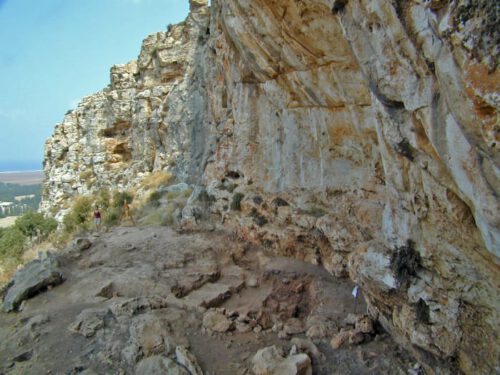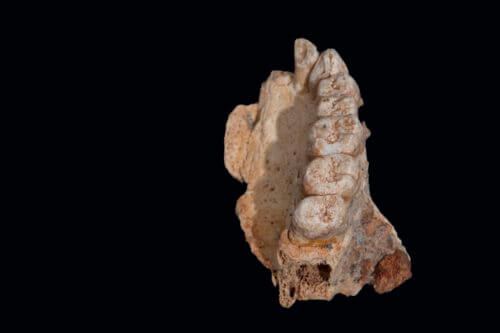Contrary to the popular theory, according to which the stagnation and dryness that characterized the ice ages deterred humans and prevented migration between continents, new and surprising research reveals that the exodus from Africa to the Middle East took place precisely in such a challenging climate * The findings were published by Dr. Lior Weisbrod from the Antiquities Authority and Prof. Mina Weinstein -Evron from the Zinman Institute of Archeology at the University of Haifa

Contrary to the popular theory, according to which the cold and dry climate during the Ice Age was a barrier to human intercontinental migration, a surprising new Israeli study reveals that the exodus from Africa took place precisely in such a climate, about 200,000 years ago. In the study, which examined fossils of animals from the Mycelia Cave in the Mount Carmel National Park, among other things, rodent species that characterize northern and cold regions were identified. The animals were found in close proximity to a human jaw, nearly 200 thousand years old. The research was published yesterday (Sunday 21.6) in the scientific magazine Journal of Human Evolution.
According to Dr. Lior Weisbrod from the Antiquities Authority, who published the new findings together with Prof. Mina Weinstein-Evron from the Zinman Institute of Archeology at the University of Haifa, "We studied tiny fossils, most of them smaller than a single mm, that were discovered in the same layer where it was found about two years ago The earliest human jaw of the modern human species (Homo sapiens) outside of Africa, a finding published by Prof. Israel Hershkovich from Tel Aviv University and Prof. Mina Weinstein-Evron from Haifa University in the prestigious journal Science. The fossils that have now been studied have been identified as belonging to 13 different types of rodents and small insectivores, some of which live today in high and cold areas, such as the Zagros Mountains in northern Iran and the Caucasus Mountains."
According to Dr. Weisbrod, "It's amazing that you can learn about all of humanity from the remains of one small Nevran. Among the species discovered in the excavation, we were very surprised to also discover animals that are only able to live in a cold climate - in particular a certain species called the mole mole (Ellobius lutescens), which lived here during the Ice Age and disappeared from our region more than 150 thousand years ago.

This means that here in the country cold conditions prevailed which allowed the survival of that animal. The finding of the human jaw in the life layer of the Nabaran means that the person lived and survived in these conditions! The tiny remains of the small animals that we studied are of prime importance for the study of human evolution. With the help of the fossils, it is possible to find out under what conditions the ancient humans could survive in different prehistoric periods, and at what rate the human ability to adapt to diverse climatic conditions developed."
The research by Dr. Weisbrod from the Antiquities Authority and Prof. Weinstein-Evron from the University of Haifa, now reveals that the departure from Africa occurred precisely during the global climate of the Ice Age, and supports the belief that the adaptations thanks to which the human species became the dominant species on Earth, appeared already at an early stage in our evolution.
According to Prof. Weinstein-Evron, the researcher who led the excavation in the Miselia Cave, "the prehistoric discoveries in Israel, and in other areas of North Africa and South-Eastern Europe, change the existing perceptions regarding
to the evolution of man. These discoveries shed light on the origin of modern man and the development of modern physiological and behavioral abilities. It is these abilities that allowed us to reach each of the continents within a relatively short period of time in evolutionary terms, hasten the extinction of earlier human species, and in fact conquer the world. If it was not the climate that initially delayed our ancestors, the researchers will have to examine other explanations, including those related to the demographics of populations, the interactions with other human species, or the late appearance of technological innovations."
More of the topic in Hayadan:

3 תגובות
What is the explanation for fossilized crystals only in a certain place for example in a cave in Carmel and not anywhere else?
The fact that it was precisely during the Ice Age that it was possible for people to move between continents and also other things that are now "discovered" we learned in the Soviet Union in elementary school about 33 years ago. It is surprising that the western world is only now finding out.
interesting conclusions based on interesting findings,
It's just that it's worth distinguishing between the "Ice Age" and the Ice Age,
Yes: the ice age began about 35 million years ago
After the set of currents in the oceans changed
When Asia, North America and Europe "closed"
On the North Pole and Antarctica "settled"
on the south pole,
That is, an ice age that was created due to the movement of the continents,
Since then our planet has experienced hot and cold periods
(because of the Milankiewicz cycle)
The (more) cold periods are called ice ages,
(In an era there are periods)